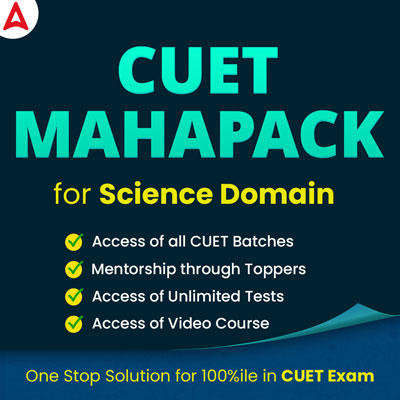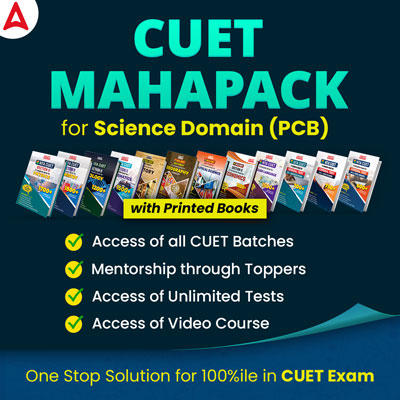Table of Contents

NCERT Solutions For Class 12 Biology Chapter 12 Pdf Download
Adda 247 provides NCERT Solutions for Class 12 Biology chapter 12. NCERT solutions which is for the students who want to go ahead in life and achieve great marks in their examinations. The NCERT Solutions for class 12 are provided by the teachers who are experts of their subjects. The solutions are set according to the rules formulated by the NCERT class 12 biology and in the language that can be understood by every student. By these reading the solutions students can build up a strong base easily. The NCERT class 12 Biology solutions covers the chapters 1 to 16 with the important questions and the answers in a detailed way.
Examinations can be threatening for some people, a proper learning of the concepts is the key to crack the examination. Students rely on the solutions of the NCERT provided by Adda 247. The solutions are formulated by the experts of the subjects who have tremendous knowledge in their subjects.
These NCERT Solutions of class 12 chapter 12 help the students to get familiarized with the textbooks. The students can access the solutions anywhere while browsing the web easily. The solutions are very precise and accurate.
NCERT Solutions for Class 12 Biology Chapter 12– Biotechnology and its Applications
The chapter provides information about Biotechnology and its applications. The applications of biotechnology include therapeutics, diagnostics and genetically modified crops for agriculture, processed food, bioremediation, waste treatment, and energy production. Three critical research areas of biotechnology are: Providing the best catalyst in the form of improved organism usually a microbe or pure enzyme. Creating optimal conditions through engineering for a catalyst to act, and Downstream processing technologies to purify the protein / organic compound.
Features of the NCERT Solutions for Class 12 Biology Chapter 12– Biotechnology and its Applications
NCERT Solutions for class 12 biology chapter 12 have been answered based on the important information on the question.
- The columns are used wherever necessary.
- Solutions are solved point wise and accurately answered point to point.
Important Questions of Ncert Solutions For Class 12 Chapter 11: Biotechnology and its Applications
Question 1. Crystals of Bt toxin produced by some bacteria do not kill the bacteria themselves because –
(a) bacteria are resistant to the toxin
(b) toxin is immature;
(c) toxin is inactive;
(d) bacteria encloses toxin in a special sac.
Answer: Cry proteins produced by some of the Bt strains do not kill the bacteria themselves because the toxin is inactive. In bacteria, the toxin is present in an inactive form, called as prototoxin, which gets converted into active form when it enters the body of an insect. It combines with the intestinal receptors of certain specific insects.
So, the correct answer is option C.
Question 2. What are transgenic bacteria? Illustrate using any one example.
Answer: Transgenic bacteria contain foreign gene that is intentionally introduced into its genome. They are manipulated to express the desirable gene for the production of various commercially important products.
An example of transgenic bacteria is E.coli. In the plasmid of E.coli, the two DNA sequences corresponding to A and B chain of human insulin are inserted, so as to produce the respective human insulin chains. Hence, after the insertion of insulin gene into the bacterium, it becomes transgenic and starts producing chains of human insulin. Later on, these chains are extracted from E.coli and combined to form human insulin.
Question 3. Compare and contrast the advantages and disadvantages of production of genetically modified crops.
Answer: GM crops are genetically modified crops that can be made by transferring desirable characteristics in them. The main advantage of GM crops is that they are highly productive and they yield an increased amount of produce. The other advantages of the production of genetically modified crops in order to increase the yield are as follows:
- GM crops can be developed for increasing the nutritional quality of crop products. For example golden rice with enhanced vitamin, A content is a GM crop.
- Many GM crops are developed to have insect pest resistance, thus, decreasing our dependence on chemical-based insecticides/pesticides.
- GM crops are made to be highly tolerant of environmental conditions.
- Gm crops are highly tolerant to abiotic conditions
- GM Crops minimises post-harvesting losses.
GM crops possess some disadvantages also. The presence of a transgene in commercial crops endangers wild species. The gene for Bt toxin expressed in pollen endangers pollinators such as honeybees. These crops supply allergens and transfer antibiotic resistance markers. They are damaging to the genetic environment.
Question 4. What are Cry proteins? Name an organism that produce it. How has man exploited this protein to his benefit?
Answer: 1. Cry proteins refer to the protein crystals containing a toxic insecticide.
- It is produced by soil bacterium, Bacillus thuringiensis.
- The genes encoding cry proteins called Bt toxin genes were isolated from B. thuringiensis and incorporated into several crop plants such as Bt cotton, Bt corn, etc, to provide resistance against insect pests.
Question 5. What is gene therapy? Illustrate using the example of adenosine deaminase (ADA) deficiency.
Answer: Gene therapy is the process of introduction of DNA into an organism e.g. human beings in order to treat a disease. It is used to replace a missing gene product or to correct mutant alleles. ADA is an autosomal-recessive inherited disorder that occurs due to defective adenosine deaminase (ADA) enzyme. Please with this enzyme deficiency suffer from severe combined immunodeficiency (SCID) conditions. Human gene therapy trial can be used for ex vivo introduction of functional ADA gene in bone marrow cells of the patient, suffering from SCID. For this process, an engineered retrovirus containing a functional ADA gene is used to transfer the ADA gene into stem cells isolated from the patient with SCID. The treated cells or modified cells with the good ADA gene are reintroduced into the patient’s marrow.
Question 7. Can you suggest a method to remove oil (hydrocarbon) from seeds based on your understanding of rDNA technology and chemistry of oil?
Answer: Recombinant DNA technology (rDNA) is a technique used for manipulating the genetic material of an organism to obtain the desired result. For example, this technology is used for removing oil from seeds. The constituents of oil are glycerol and fatty acids. Using rDNA, one can obtain oilless seeds by preventing the synthesis of either glycerol or fatty acids. This is done by removing the specific gene responsible for the synthesis.
Question 8. Find out from internet what is golden rice.
Answer: Golden rice is new genetically modified rice variety (Oryza sativa). It is produced to biosynthesize beta-carotene for the synthesis of vitamin A. It is rich in vitamin A content. It was created by Peter Beyer. It is intended to produce a fortified food to be grown and consumed in areas with a shortage of dietary vitamin A.
Question 9. Does our blood have proteases and nucleases?
Answer: Human blood does not include these enzymes, nucleases and proteases. In human beings, blood serum comprises various types of protease inhibitors that protect the blood proteins from being broken down by the action of proteases. The enzyme, nucleases, is also found absent in the blood.
Question 10. Consult internet and find out how to make orally active protein pharmaceutical. What is the major problem to be encountered?
Answer: Orally active protein pharmaceuticals contain biologically active proteins, peptides etc. These are taken into the body by oral route in various formulations. The production of these protein pharmaceuticals involves encapsulation of proteins or peptides in liposomes using penetration enhancers. These proteins or peptides are used for the treatment of diseases and they can also be used as vaccines.
The major problem encountered in the administration of these pharmaceuticals is that they are ingested orally, and digested by the proteases present in the stomach before showing results. This is why such pharmaceuticals are directly ingested into the target site.
Frequently Asked Questions on NCERT Solutions for Class 12 Biology Chapter 12
What are the advantages of referring NCERT Solutions for class 12 Biology chapter 12?
Students referring the ncert solutions for class 12 biology chapter 12 pdf download by Adda 247 find the solutions helpful during the exams. The solutions are prepared by the experts in an interactive manner keeping in mind the students. The students’ perspective is kept in mind while preparing the solutions. It helps in completing the syllabus on time and also provides notes for the revision prior to the exam.
What are the advantages of referring NCERT in competitive exams like JEE and AIPMT?
Most of the competitive exams like NEET, JEE etc. follow the basic NCERT books for designing their question papers. NCERT serves as the base for every book prepared for NEET and JEE. The competitive exams are based on the CBSE syllabus applied in XI and XII classes and NCERT books strictly follow CBSE syllabus. In addition to this, NCERT books play an important role in clearing out the theoretical concepts. Every topic given in NCERT books is explained in such a way to help students make their basics and fundamentals strong and clear.
How To Use NCERT Solutions For Class 12 Biology?
- i) Study the chapter topic wise and understand the various concepts.
- ii) First, try to solve the questions by yourself and then look at the solutions.
- iii) Use them as a reference guide while revising the chapter.
- iv) If you get stuck at any question, you can check the step by step solution from the PDF from ncert solutions for class 12 biology chapter 12 pdf download by Adda 247.
.
Is it mandatory to solve all the NCERT questions mentioned at the end of each chapter?
The questions and answers mentioned in NCERT textbooks at the end of each chapter are quite important not only for examination but also for understanding the concepts in a better way. These questions aim to test the students’ understanding and learning over the topics that they have learned in the chapter.
Solving the NCERT exercise problems will help to
- clear all the concepts and formulae you learned in a chapter
- get comfortable with different types of questions that might be asked in exams
- get enough practice which is key to succeed in Mathematics exam
- improve your accuracy and speed
What is Biotechnological Applications in Agriculture?
The application of agricultural biotechnology can improve the quality of life by developing new strains of plants that give higher yields with fewer inputs, can be grown in a wider range of environments, give better rotations to conserve natural resources, provide more nutritious harvested products that keep much longer in storage and transport, and continue low-cost food supplies to consumers.
What are the important concepts covered in the Chapter 12 of NCERT Solutions for Class 12 Biology?
The concepts involved in the chapter 12 of NCERT Solutions are –
12.1 – Biotechnological Applications in Agriculture
12.2 – Biotechnological Applications in Medicine
12.3 – Transgenic Animals
12.4 – Ethical Issues
These concepts are created by the faculty at Adda 247. The solutions are available at Adda 247 in the PDF format which can be downloaded by the students.
| NCERT Solutions for Class 12 Biology Chapter-wise |
|
Chapter 1: Sexual Reproduction in Flowering Plants
|
|
Chapter 2: Human Reproduction
|
|
Chapter 3: Reproductive Health
|
|
Chapter 4: Principles of Inheritance and Variation
|
|
Chapter 5: Molecular Basis of Inheritance
|
|
Chapter 6: Evolution
|
|
Chapter 7: Human Health and Disease
|
|
Chapter 8: Microbes in Human Welfare
|
|
Chapter 9 : Biotechnology: Principles and Processes
|
|
Chapter 10: Biotechnology and its Applications
|
|
Chapter 11: Organisms and Populations
|
|
Chapter 12: Ecosystem
|
|
Chapter 13: Biodiversity and Conservation
|




 [Live Update] CUET PG Result 2025 @exams...
[Live Update] CUET PG Result 2025 @exams...
 UP, MP, CBSE Board Result 2025 Live Upda...
UP, MP, CBSE Board Result 2025 Live Upda...
 CUET UG Exam Date Sheet 2025 @cuet.nta.n...
CUET UG Exam Date Sheet 2025 @cuet.nta.n...






